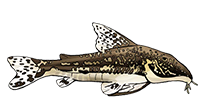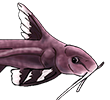I have 3 peppered and 3 julii corys in a 20L. No other fish are in there. Water parameters are excellent (ammo=0, nitrite=0, nitrate=10, pH=7.2, temp=75).
One peppered cory hadn't moved for more than 24 hours and didn't eat. So, I moved him to a QT yesterday. I dosed Seachem Paraguard and he became active. Today he became lethargic, was breathing rapidly and didn't eat at all. I don't see any abnormal sign on his body except that his tail fin is a little bit clumped. What could be the problem?
Edit: I posted this in a wrong forum. Mods, please remove this. I'll repost in a right forum.
Sick Cory Moved To QT. Now What To Do?
-
wrasse
- Posts: 761
- Joined: 16 Feb 2007, 10:13
- My articles: 1
- My images: 9
- My cats species list: 22 (i:0, k:0)
- My aquaria list: 1 (i:0)
- Spotted: 5
- Location 1: Pailton, Warwickshire, UK
- Location 2: Pailton, Warwickshire, UK
- Interests: catfish, photography, gym, cooking
Re: Sick Cory Moved To QT. Now What To Do?
First thoughts are - water conditions seem good, although the tank is small.
Its very hard to diagnose from your description when you have so few symptoms. And I'm not sure how to interpret a 'clumped' tail. Does that mean its folded to a point?
This is guess work - rapid breathing and folded fins can be early indicators of oodinium. If that's the case your other fish will be infected too, so watch closely for signs. There are meds specifically for this disease, such as liquisil, also provide strong aeration.
Its very hard to diagnose from your description when you have so few symptoms. And I'm not sure how to interpret a 'clumped' tail. Does that mean its folded to a point?
This is guess work - rapid breathing and folded fins can be early indicators of oodinium. If that's the case your other fish will be infected too, so watch closely for signs. There are meds specifically for this disease, such as liquisil, also provide strong aeration.
Re: Sick Cory Moved To QT. Now What To Do?
By 20L, I mean a 20 gallon long tank, not a 20 litre tank. No specs of gold on his head and body. So it's not oodinium. The only abnormal thing is his tail fin seems sort of folded. Perhaps, tail rot? It's hard to diagnose because he is small (about 1 inch).




